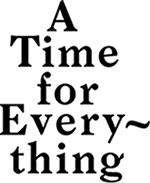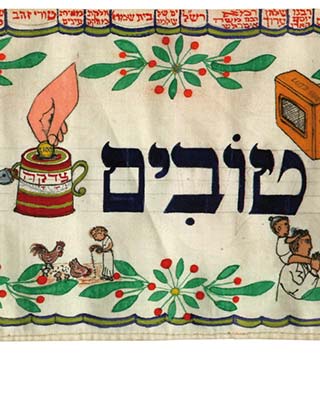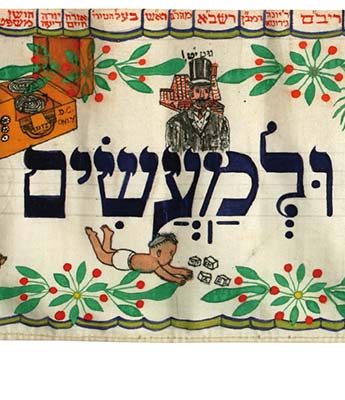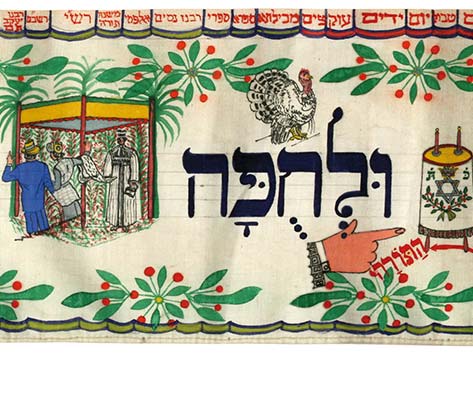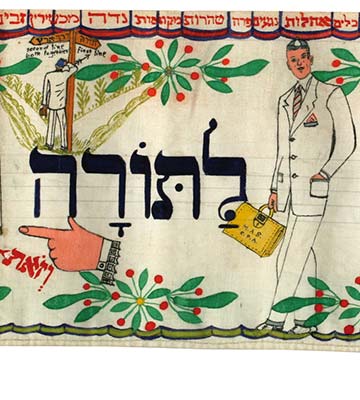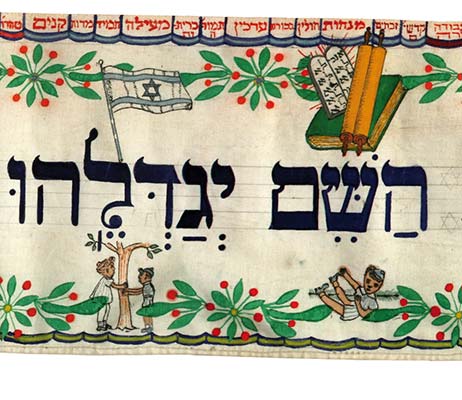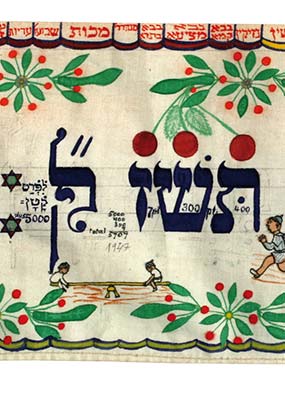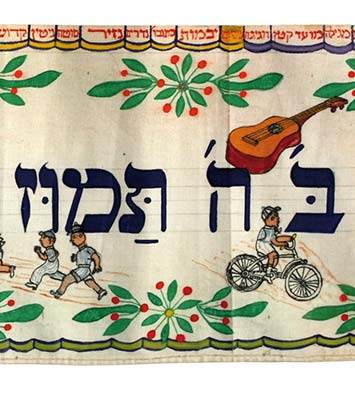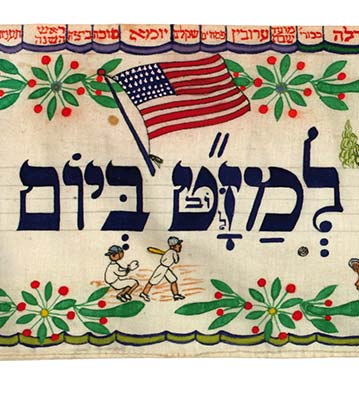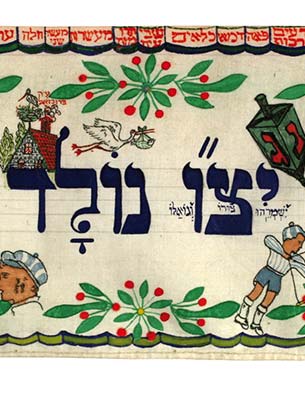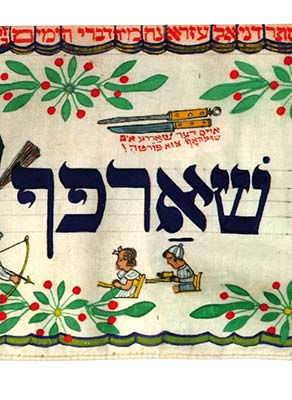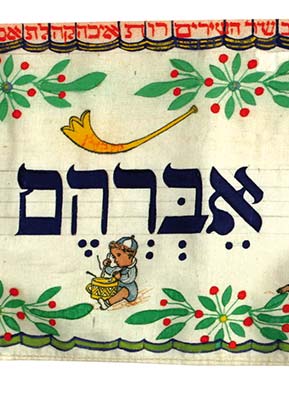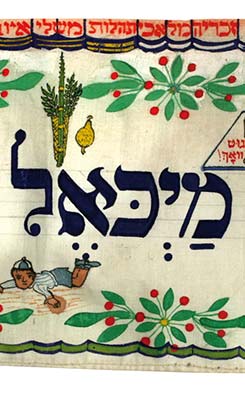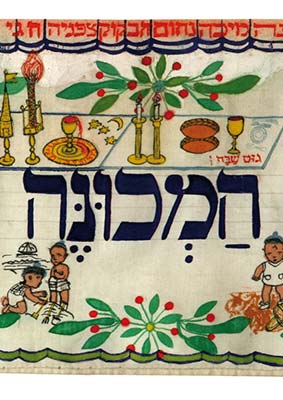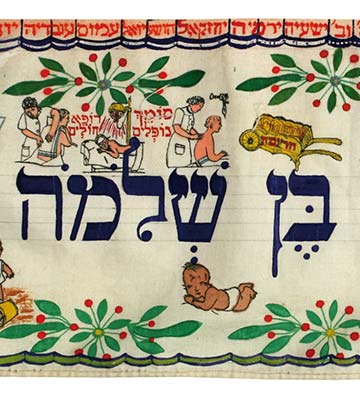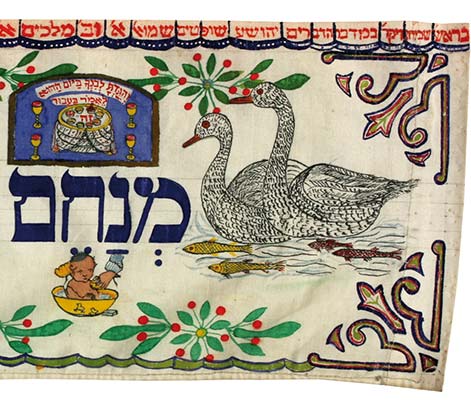Life
Torah Binder
New York, 1947
-
Linen
Artist: Reuben M. Eschwege (1890–1977)
© Gross Family Collection, Tel Aviv, photo: William Gros
The German expression "Tora-Wimpel" (Torah binder) derives from the Old High German wimpfen, which means cloth or binding. Torah binders were relatively well-known among German-speaking Jews from the fourteenth century CE until around the mid-nineteenth century. Made of cleaned strips of the circumcision diaper sewn together into a long strip of cloth, binders were painted or embroidered with elaborate decorations and ornamentations. They depict the stations in the life of a Jewish man from his birth to bar mitzvah and wedding and on to death.
The blessing that adorns every Torah binder comes from the circumcision liturgy: "May God raise him up to [a life of] Torah, the chuppah [a successful marriage], and good deeds, Amen. Selah." This blessing articulates the desired life goals of a young man and the hopes of the community for a helpful future member.
On the boy's third birthday, the Torah binder is presented to the Jewish community in a festive ceremony. On this occasion the son often accompanies the father to the synagogue for the first time. This is where the binder is used for its intended purpose, to bind together the two Toral scrolls at the beginning of the portion to be read the following week. The Torah is rolled from the left stave to the right one for the weekly reading and the binder protects the scrolls and holds them in the desired position.
A binder accompanies its owner his entire life and is used during all important ceremonies. During a boy's bar mitzvah his binder is wrapped around the Torah scrolls and it later decorates the chuppah, or wedding canopy, when he gets married.
The Torah binder shown here does not only have unusually detailed ornamentation, but it was made by the hand of a special artist. The cantor Reuben Eschwege fled from Würzburg to the United States in 1939. In his new home in New York he worked as a mohel (ritual circumciser) and thus was asked by many German-Jewish emigrant families to create the Torah binder for their sons. These families thus continued a custom of their German ancestors in the new and unfamiliar continent, thereby preserving their traditions.

